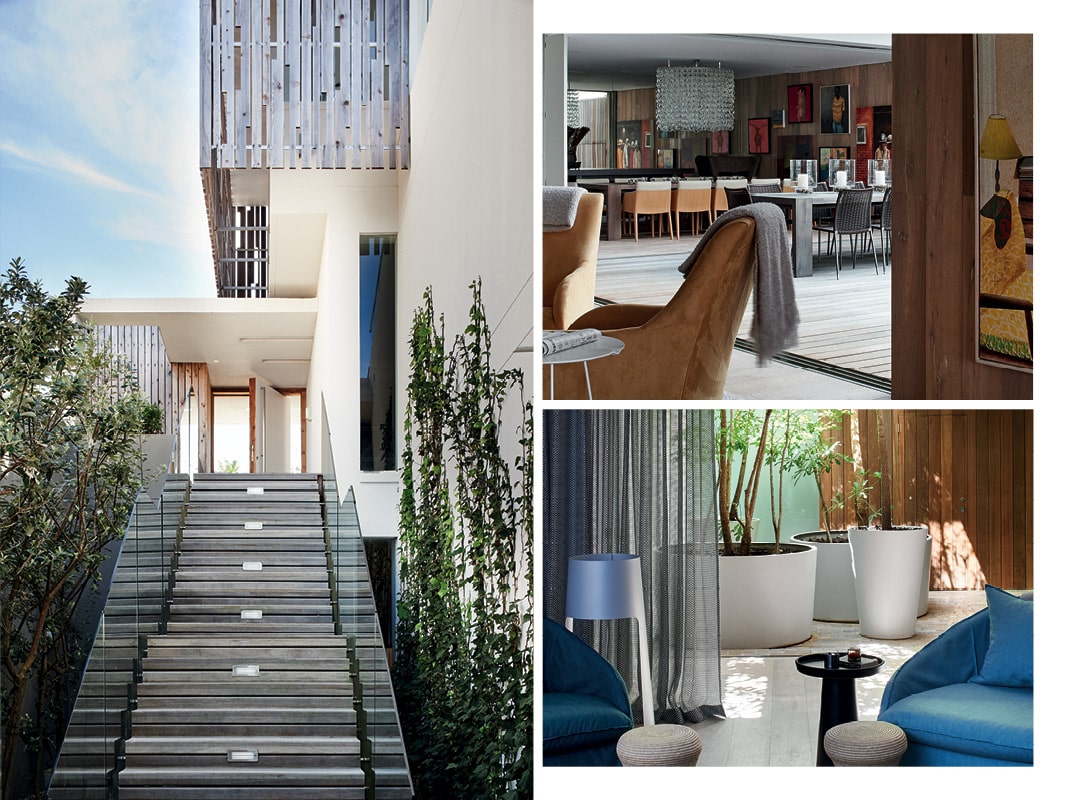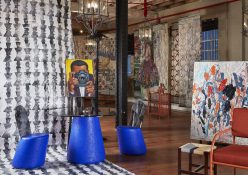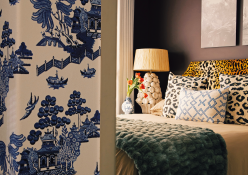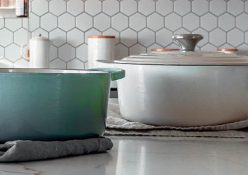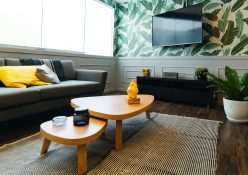An environmentally aware, discreet beach house opens out on to the dunes boasting views across the Robberg Bay.
There’s a breathtaking sweep of bay curving off towards mountains in one direction and an unmistakable spar of land jutting out into the ocean on the other. This Robberg beach house is equally striking: Created by interior design partners Boyd Ferguson and Paul van den Berg of Cécile & Boyd, in tandem with architect Joy Brasler, it is indeed a singular home, located along South Africa’s picturesque Garden Route. Built for an international family, this beach house hunkers down quite humbly beneath the dunes, rather than imposing itself imperiously on the seascape.
Out of sensitivity to the natural context, and the close proximity to various neighbours and their respective built environments, the rather steep site sliding down towards the sea was excavated so that the house would intentionally lie quite low on the sand. An original dune was reconstructed at street level to further hide the house and integrate it into the natural environment.

The facade is punctuated by irregularly patterned American redwood cladding, which heightens this sense of the house being at one with nature. ‘Essentially, the house is a simple white cube,’ says the architect, ‘but this wooden veil makes you aware of the passage of life through the shadows it casts on the inside. Besides offering security, privacy and shelter from the elements, it also bears the house into the site, meshing it into the landscape. The natural rhythms in the patterning of the cladding echo the organic textures of the milkwood trees that surround the site, so that the house is adjunct to the vegetation around. It is a quiet insertion.’

Wooden cladding is a motif that repeats on the interior too. Structurally, an open-plan scheme was achieved and advanced by ‘hiding’ the hard-working, yet visually unappealing elements of the home, such as fridges, within the architectural detail of wooden cladding that occurs throughout.
Cécile & Boyd pursued extreme texture in architecture and furniture, unity of vision and understatement. ‘Our interior architecture of these rooms was about creating an “essence of freedom” with an emphasis on flow of space and light. Simplicity unites the multi-use, flexible areas of the home, yet the senses are still delighted at every turn by a different composition in each individual area,’ says Paul.

For the full article on this Robberg beach house and many more decor tips, grab your September issue of Livingspace.

